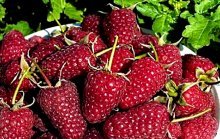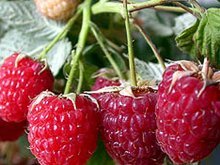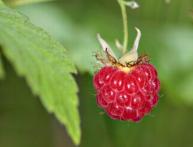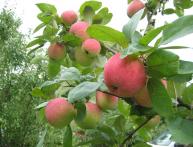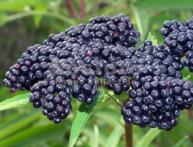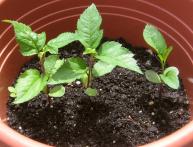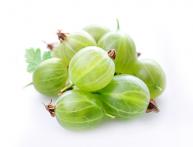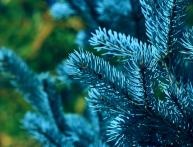Growing remontant raspberries in annual and biennial cycles, varieties, propagation, care
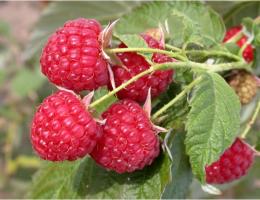
Raspberries are one of the most delicious garden berries. The first information about raspberries dates back to the third century BC. Since the 4th century AD. e. Raspberries are already mentioned as a garden crop. In Russia, raspberries are found growing wild everywhere. Unpretentiousness and high taste qualities have made raspberries the No. 1 berry crop. Analyzing the modern assortment of this berry, we can conclude that some ordinary varieties provide the bulk of the harvest.
But now varieties that bear fruit in both summer and autumn are becoming increasingly popular. They are called remontants. Although in some countries such raspberries are called repeat-bearing or continuously bearing. Let’s try to figure out how growing remontant raspberries differs from growing conventional varieties.
Content:
- Raspberry remontant
- Agricultural technology for growing remontant raspberries in a two-year and one-year cycle
- How to plant and grow remontant raspberries
Raspberry remontant
Remontant raspberries are grown by amateur gardeners, most likely as an addition to the main varieties. Breeding work on obtaining remontant varieties began two centuries ago. In domestic selection, work on breeding raspberries, which produces a second harvest, was led by I.V. Michurin.He obtained raspberries, which produced a small harvest of berries at the ends of the shoots of the current year.
In addition, it was possible to obtain a second harvest only during a long, warm autumn.
At the same time, more than two dozen remontant raspberry varieties were bred abroad. As it turned out, almost all of them were not suitable for cultivation in Russia. Only in the southern regions was it possible to achieve full ripening of the second harvest.
Systematic work on breeding remontant varieties began about half a century ago. The main role was assigned to Bryansk professor I.V. Kazakov. For the parent forms, the professor took not only varieties of American selection, but also varieties raspberries red and black, princely and other varieties of this culture. The result of the work was varieties of remontant raspberries, which began to produce a second harvest at the end of August and bore fruit until the October frosts.
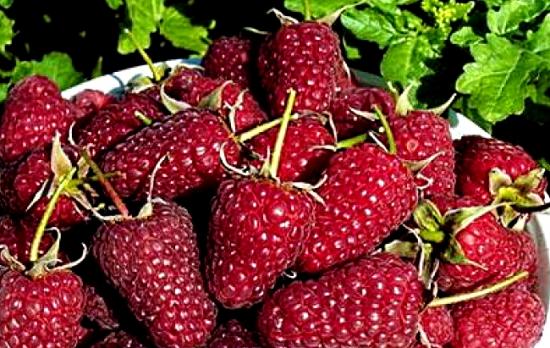
It should be noted that one of the first domestic varieties, Indian Summer, gave a second harvest only in the south, however, in the subtropical climate of Sochi, the berries ripened until December. Although growing remontant raspberries is similar to growing conventional varieties, the agricultural technology of cultivation differs from conventional agricultural technology in several key ways.
Agricultural technology for growing remontant raspberries in a two-year and one-year cycle
While working on varieties I.V. Kazakov noted that a full autumn harvest could only be harvested in warm autumn conditions. The raspberries started their first harvest on last year's shoots at the usual time for raspberries. The second harvest was produced by the tips of the shoots that grew in the current season. Thus, two harvests could be obtained.The Zhuravlik and Zhar-bird varieties are suitable for growing in a two-year cycle. The autumn harvest is significantly smaller than the summer harvest and it is possible only with a favorable climate and good weather. However, such conditions do not always exist.
Therefore, traditional growing methods had to be revised and remontant raspberries had to be grown using a completely different technology as an annual crop. Varieties were obtained that form a full-fledged harvest once per season on the shoots of the current summer. Their shoots did not experience any adverse effects in late autumn and winter periods, so the berries retained their marketable appearance and were almost not damaged by pests. As soon as the shoots produced a harvest, with the onset of frost they were completely cut off above ground level.
Remontant raspberry on video, its features:
In the spring, from the roots, raspberries again form new shoots of the current year. By the second half of summer, flowers and berries form on them. Fruiting continues until frost. As soon as the soil begins to freeze, the above-ground part of the shoots is cut off again. With such agricultural technology, the harvest is formed once from the end of August and continues throughout the warm period of autumn.
Considering that there are no ground shoots in winter, it is also possible to get rid of the main pests and diseases. When grown annually, raspberries, as a rule, manage to complete the full cycle of their development in one season. Every year, remontant raspberries produce a harvest only on shoots that grow in the spring and are completely cut out in the fall.
After pruning, all cut shoots are removed from the site. The following varieties are suitable for growing raspberries in an annual cycle:
- Darling
- Chief Marshal
- Red Guard
- Apricot
- Augustine
- White Guard
All varieties are distinguished by the fact that in temperate climates they manage to produce the harvest in the quantity provided for by the characteristics of the variety. Perhaps in the near future an annual growing method remontant raspberries will become the main one, as it allows the plant to express its varietal qualities more fully and obtain a harvest in the required quantity and quality. It is better to collect one full harvest of berries than to have a not very large summer harvest and not every year to receive an autumn harvest in unfavorable weather conditions from a bush weakened by summer fruiting.
How to plant and grow remontant raspberries
Reproduction
Obtaining planting material from remontant raspberries is much slower than from conventional garden varieties. This is primarily due to the limited amount of root shoots. To increase its quantity, in the spring of the second year after planting, carefully dig out the central part of the roots. The radius of the removed part is about 15 cm. This part is planted in a new place. After this procedure, many roots of various sizes will remain in the ground. They will produce approximately 20 new root shoots.
As they grow, they can also be replanted. It is important to remember that shoot regrowth is uneven and can continue throughout the summer. The second way to obtain planting material is propagation by green cuttings.
This method is also called “nettle” propagation. This is due to the fact that the rosette of leaves that appears on the surface of the earth in early spring resembles young nettles. The “nettle” must be cut off along with the clarified underground part. The cut shoot will not have its own roots, but it must be removed along with a small lump of earth.Green after being removed from the ground cuttings transplanted into a greenhouse.
It is better to dilute the soil in the greenhouse with river sand and peat. The depth of planting should not exceed the depth at which the cutting grew before. In this mixture, “nettle” will produce roots in about 21 - 25 days. It is important to prevent drying out and overheating. After rooting, you can begin hardening the seedlings and only after that transplant them to a permanent place.
Planting and care

Light loams with a slightly acidic reaction are suitable for planting remontant raspberries. The soil is well seasoned with compost and humus. In addition, up to 100 g of superphosphate and up to 50 g of potassium sulfate are added. Everything is mixed with soil and only after that they begin to plant remontant raspberries. Planting time is autumn or spring. It’s a good idea to plant the berries not in planting holes or furrows, but in high ridges, this will speed up the appearance of the harvest.
Throughout the season, it is important to prevent the soil from drying out, but stagnation of moisture is also undesirable. Timely removal of weeds and loosening of the soil is also necessary. In many ways, caring for remontant raspberries grown in an annual cycle is easier, since the above-ground parts are simply removed for the winter. If summer shoots are still left to winter, then they need to be bent to the ground and covered with the onset of cold weather. Technology growing Although remontant raspberries differ from growing conventional varieties, any gardener can master it.

